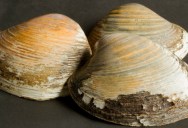Scientists Discovered That The Oldest Giant Clam Was Born Around 1499 CE. They Named It Ming.

Humans have a relatively short life span, but recently we have been living longer and longer – many of us beyond 100 years.
It might be impressive, but we’ve got nothing on this giant clam, which has been around since 1499 CE.
The giant ocean quahog clam (Arctica islandica) was found off the coast of Ireland in 2006. Scientists determined its age by counting its growth rings, kind of like we do to date a dree.
“Annual band countin from the sectioned shell revealed that this clam lived for more than 405 years, making it the longest-lived mollusk and possibly the oldest non-colonial animal yet documented.”
When radiocarbon dating came back, though, it revealed the clam was actually 507 years old – born sometime around 1499 CE.

They named it “Ming.”
The researchers say its age isn’t uncommon, as far as they can tell.
“The same species of clam are caught commercially and eaten daily. Anyone who has eaten clam chowder in New England has probably eaten flesh from this species, many of which are likely several hundred years old.”
Marine biologist Doris Abele talked with Science Nordic about why they’re able to live for so long.
“The A. islandica has a very low oxygen consumption. When an animal has such a slow metabolism, it normally also means that it has a very long lifespan. However, I also believe that part of the reason for its longevity lies in its genes. With the exception of nucleic acid oxidation, damage levels of A. islandica do not change with age, indicating excellent cellular maintenance.”

That last bit seems to be the most relevant part.
“Since correlations between nucleic acid oxidation and age have also been shown previously in other organisms, and nucleic acid oxidation accumulation rate correlates with relative age in both investigated populations, nucleic acid oxidation may reflect intrinsic aging mechanisms.”
Sadly, Ming did not live long in captivity.
She survived the Reformation, a bunch of wars and a lot of technological advancements, but of course, a run-in with humans did her in.
Thought that was fascinating? Here’s another story you might like: Why You’ll Never See A Great White Shark In An Aquarium

Sign up to get our BEST stories of the week straight to your inbox.




